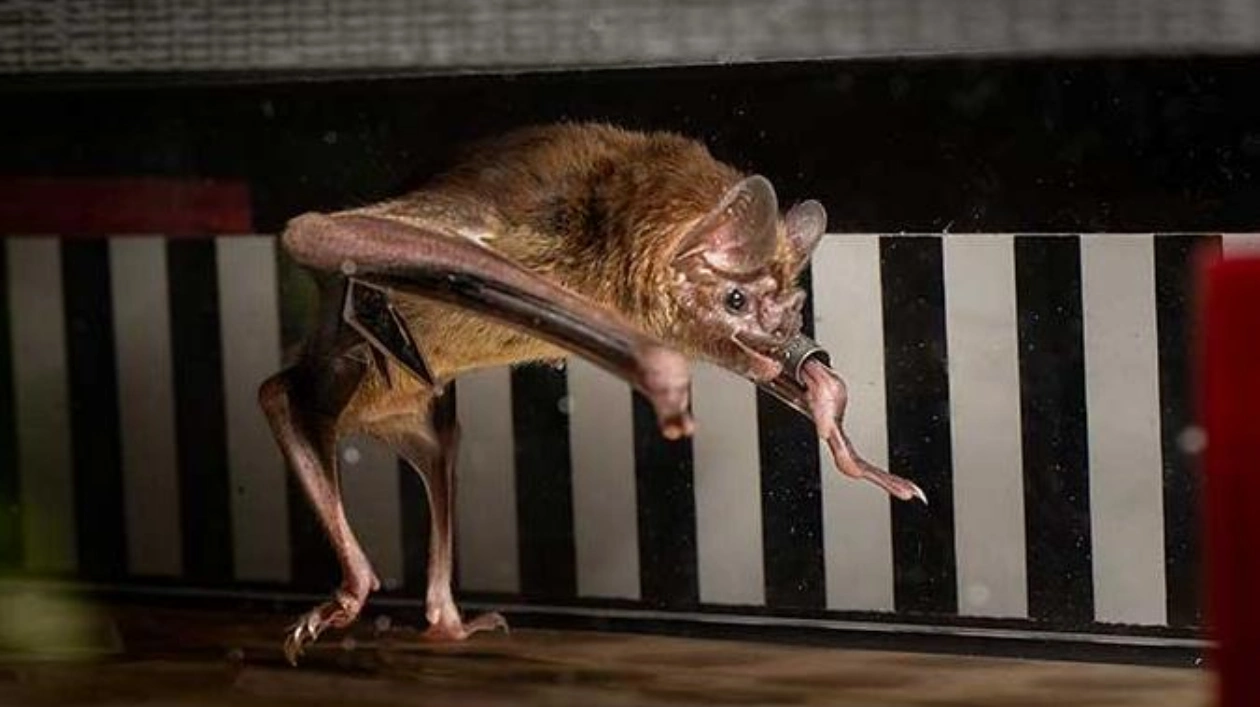Vampire bats have evolved into highly specialized bloodsuckers, with a metabolism that more closely resembles that of blood-feeding flies than other mammals, according to a recent experiment. The common vampire bat (Desmodus rotundus) does not rely solely on flight for movement; it also scurries along the ground to target cattle, horses, and other mammals for blood. Researchers, intrigued by what fuels these creatures, managed to coax the bats—at least temporarily—to run on a custom-built treadmill designed for bats.
A significant portion of the carbon dioxide exhaled by the bats during exercise (up to 60 percent) originated from metabolizing fuel sources other than carbohydrates or fats, which typically power running mammals. Instead, much of the energy used by the bats came from a recent high-protein meal of cow blood; the gases emitted contained telltale traces of amino acids, the building blocks of proteins. Another indicator of the fuel source (the ratio of carbon dioxide exhaled to oxygen used) remained constant as the researchers increased the treadmill speed from walking to running. This steadiness suggests that bats do not fuel their exertions in the typical mammalian manner. Gas ratios usually change as exercise intensifies, with mammals shifting from burning mostly lipids to relying more on carbohydrates.
This discovery indicates that vampire bats primarily rely on metabolizing a recent blood meal, similar to blood-feeding tsetse flies or certain female (and thus bloodsucking) mosquitoes. This is a first for mammals, according to Ken Welch, an ecological physiologist at the University of Toronto, who conducted the experiments with physiologist Giulia Rossi, now at McMaster University in Hamilton, Canada. The basic biochemical pathways in bats are not entirely unique. “In most mammals,” Welch explains, “some biochemical pathways can break down amino acids for fuel or other uses, but they operate at a slow, background level.”
This fuel source might be relevant for hibernating bears or overwintering penguins, but these are extreme examples. Even then, these animals do not use amino acids ingested only minutes before. The vampire bat’s blood diet is relatively poor in nutrients that allow most mammals to build up stores of conventional fuels such as lipids. It makes sense to Welch that any ancestral ability to use sugar by-products and fats weakened over time in vampire bats. However, this heavy reliance on amino acids, which are not as easily accessible, means the bats could be more susceptible to starvation. These vampires often experience thirst.
Source link: https://www.sciencenews.org






